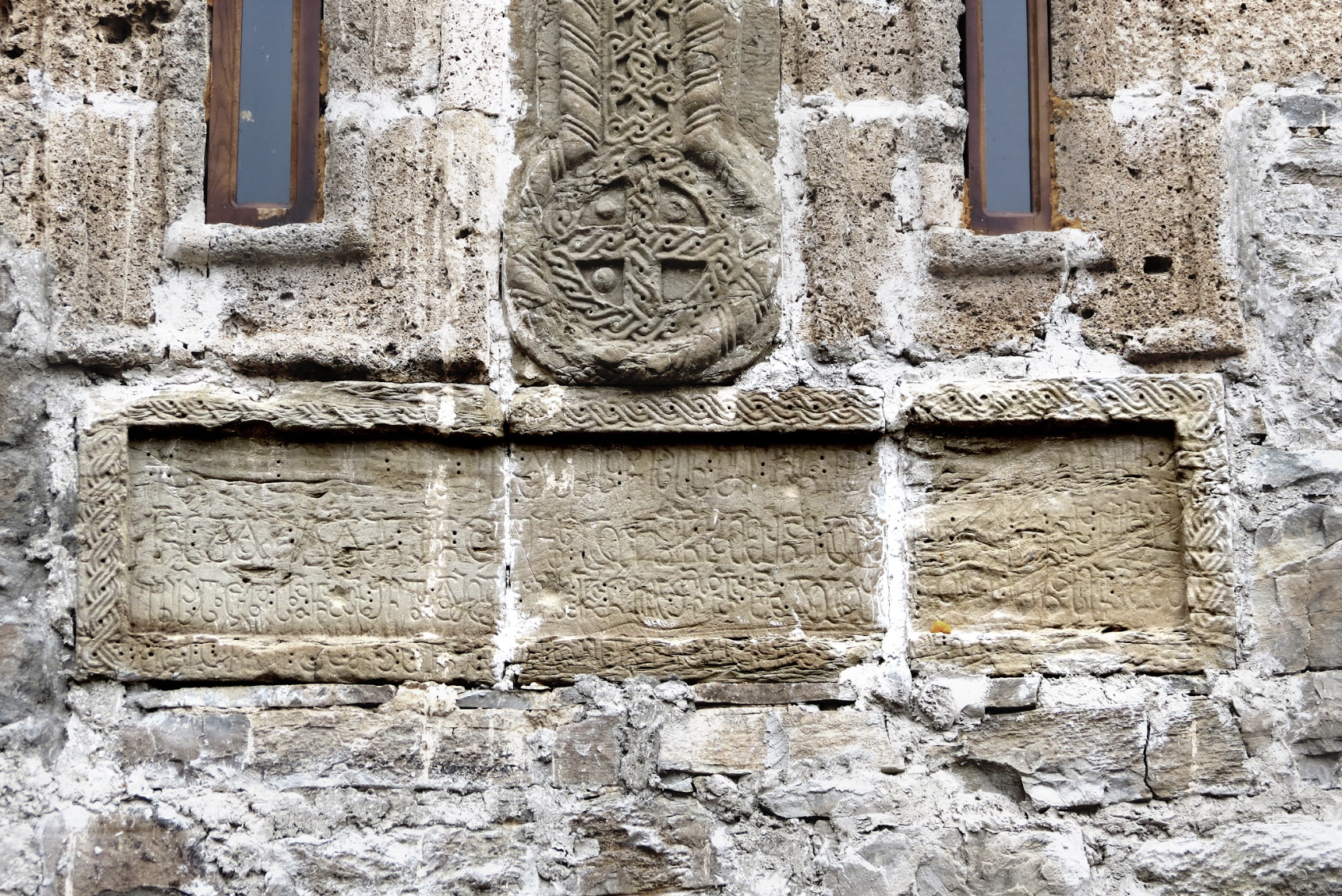
Feel free to add tags, names, dates or anything you are looking for


Pudznari Church of the Mother of God is located near the village of Bodavi, in the gorge of the River Bodaviskhevi, the left tributary of the Aragvi River. It stands on a flat location at the bottom of a hill, in the center of an enclosed courtyard.

Pudznari Church viewed from the south-west
The church is built of mixed materials – part jagged stone, and part well-hewn travertine blocks. It is a cross-domed structure with a rectangular plan. The dome rests on the corners of the apse wall projections to the east, and two piers to the west. Pendentives serve to transition from the square central bay to the circular base of the dome. The altar apse is flanked by rectangular rooms for the diaconicon and prothesis. Three doors in the west, south, and north walls provide entrance to the inner space.

Interior view of the dome
Unlike other contemporaneous Georgian churches, Pudznari Church displays modest exterior decoration. The façades bear no sculptural adornment, since the facing material is unsuitable for carving.

The dome
The large surfaces of the walls are plain, with only the drum of the dome having been decorated with blind arches. One narrow window is cut within each of the drum’s twelve arched facets. The eastern and western façades feature large representations of crosses. The window frames on both the drum and the main structure of the building consist of simple baguettes.

Middle section of the eastern façade
On an architectural basis, the church has been dated to the first half of the thirteenth century. In the fifteenth century the church was restored, and a small apsed chapel was added to the eastern end of the northern wall. The damaged donor inscription located beneath the twin windows of the western façade also dates from that period, as well as the ornamental strip and roundel positioned between the windows.

Ornamental roundel and donor inscription
By the nineteenth century, the church had become abandoned and dilapidated, leading to the collapse of significant portions of the dome and vaults. The building was fully restored as a result of reconstruction works carried out between 2012 and 2014.